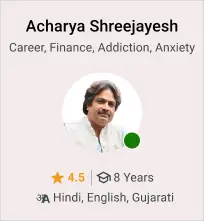Puranas – Unveiling the Legends of Gods

Mythology has a special significance in Sanatan Dharma. Our ancestors knew the importance of this knowledge since ancient times. They did not just acquire that knowledge but also collected it for future generations. Keeping this in mind, our ancestors saved this knowledge in the form of Shruti, for future generations. When the writing skills developed during the Vedic period, this knowledge of long years was included in the Vedas. Thereafter, the tradition of Guru and disciple gave birth to the Upanishads. But most of the writings of the Vedas and Upanishads had become complex & esoteric, so their reach and understanding among people remained limited.
But when the knowledge of the Vedas began spreading in the Indian mind in the form of Upanishads. Well, it found a place in the incessant stream of the devotion of the Puranas. There are various questions related to Puranas, like how many Puranas are there, which is the oldest Purana, and how the Puranas were born, etc. So let us try to solve the meaning of the word Purana, knowledge of Purana, and all other questions related to Puranas with Vedic knowledge.
How Many Puranas Are There?
The first and fundamental question is, what is the present number of Puranas. Well, the answer to this question is that the number of Puranas is eighteen. Well, there are various types of Puranas. And, there is a reason behind the number 18, the number of Vedas. It is an auspicious number, which has high importance in the Indian tradition.
The Eighteen Puranas Names As Stated In Narada Purana
According to Narada Purana, 18 Puranas are as follows:
- Padma Purana
- Vishnu Purana
- Vayu Purana
- Bhagavata Purana
- Narada Purana
- Markandeya Purana
- Agni Purana
- Bhavishya Purana
- Brahmavaivarta Purana
- Linga Purana
- Varaha Purana
- Skanda Purana
- Vaman Purana
- Kurma Purana
- Matsya Purana
- Garud Purana
- Brahmanda Purana.
Basically, there is some ambiguity about the recognition of Puranas. Various sects in Hinduism vary on the differing importance given to different Puranas.
Unlock Your Future, Get Your Personalised Handwritten Yearly Prediction Reports For 2025.
The Purpose Of Writing The Puranas
The second important question is why the Puranas were written. There may be various opinions in response to this question. Puranas are an invaluable gift of Hindu philosophy to world literature. Through the Puranas, we can learn about the origin and characteristics of the Gods and Goddesses whom we worship.
The Puranas also give us deep information about the beginning of the universe and the first man Manu and his descendants. With the help of these Puranas, we know about the different time & ages. The comprehensive information given in these Puranas is educative as well as interesting and exciting. The writing style of these Puranas was made more comfortable and simple than that of the great Vedas.
What Is The Meaning Of The Purana?
If we break the word Purana into two parts, we get Pura and Ana. Pura means the past which can be called ancient. Besides, Ana means to say or tell. When we use the word Purana for these 18 epics, it clearly means to tell about olden times. The meaning of the word Purana further reinforces that Puranas are one of the oldest texts in world literature. The written knowledge and morality are considered a priceless foundation of human civilization. Unlike the difficult language and style of the Vedas, the Puranas present the same knowledge to the common people in an easy and interesting way.
The Learning From Puranas
Puranas are an incredible storehouse of education, so the question about what we get from Puranas seems a tough issue. The Puranas teach us the most complicated things of this creation easily. They talk about ethics, geography, astronomy, politics, culture, social traditions, science, astrology, Ayurveda, devotion, philosophy. The eternal nature of Puranic education has made it very precious and important.
What Will You Do In Your Life? Get Access To the Premium Janampatri Report.
The Brief Knowledge Of Various Puranas
Brahmapurana
In the Brahmapurana we get to know about the origin of the universe and the birth of Manu, his offsprings, and other deities.
Padmapuran
In Padmapurana we get to know about the devotion towards Lord Vishnu and various aspects of his life.
Vishnu Purana
In Vishnupuran, there are references to the various aspects of Lord Vishnu.
Shiva Purana
In ShivPurana, we get information about Shiva’s human avatar about Shiva’s birth and his family life. It is also widely known because of the mention of Shiva in the Vayu Purana.
Bhagwat Purana
In Bhagwat Purana, the essence of all types of philosophies is found. Vishnu avatar Lord Krishna is also the main focal point of this Purana.
Narada Purana
In Narada Purana, we can find the mention of the festivities and fasts in Hinduism. Along with this, acts related to Moksha, Dharma, Nakshatra, Grammar, Astrology, Grahastha Jeevan, Mantra Sadhana, and Shraddha are also explained in detail in Narada Purana.
Markandeya Purana
In Markandeya Purana, we can find detailed mention of the deities, in which we get information about all the Vedic deities including Indra, Agni, Surya, Vayu.
Agnipuran
Agni Puran is considered to be the cradle of Indian culture and learning. In Agnipuran, we get information about setting up Shivling and setting up the idols of other deities like Durga, Ganesh Surya. Along with this, information about subjects such as geography, mathematics, resultant astrology, marriage, death, Vastu Shastra, Ethics, Martyrdom, and Theology is available.
Bhavishya Purana
In BhavishyaPurana, we mainly get a description of events that will happen in the future. There is also the description of subjects like Brahmin-Dharma, Ethics, Varnashrama-Dharma, etc.
Brahma Vaivarta Purana
The description of Lord Krishna’s incarnation of Lord Vishnu and his character is found mainly in the Brahmavaivartpurana. Apart from this, the mysteries related to Brahma, Prakriti, and Ganesha are also mentioned in Brahmavaivartpurana.
Lingpuran
In Lingpuran we get the story of the 28 incarnations of Shiva and the description of the worship of Shiva.
Varaha Purana
The Varaha Purana describes the Varaha avatar of Lord Vishnu. The story of the salvation of the earth from Hades is also described in this Purana.
Skanda Purana
Skanda is the name of Kartikeya, the beloved son of Lord Shiva, Skanda Purana is the largest of the eighteen Puranas. There are six Samhita and two Gitas in their two sections.
Vaman Puran
Vamanpuran describes the Vamana avatar of Lord Vishnu. Besides, the context related to Hari Bhakti is also the main theme point of this Purana.
Koram Puran
In Korampuran, there are interesting episodes related to the Kurma avatar of Lord Vishnu. This Purana has four Samhitas and two Gita are also derived from this Purana.
Matsya Purana
In the Matsya Purana, there is a description of the water catastrophe and the Matsya avatar of King Manu and Lord Vishnu. The list of kings of Kali Yuga is also obtained from Matsyapuran.
Garud Puran
It is a Vaishnava Purana. The speaker of Garuda Purana is Lord Vishnu himself and the listener is Garud Ji. According to the Puranas, this knowledge was received by Garuda from Lord Vishnu. In this Purana, we get a description of the legislation related to the worship of Lord Vishnu and the events that happen after death.
Brahmanda Puraan
In the Brahmanda Purana, we get a detailed description of Kalpa and Manvantara (the time of Brahma). With this, information about the Saptarishis and Prajapati clan and Kashyapa’s clan is found.
The Importance Of Puranic Culture
Indeed, Puranas are the soul of Indian culture. Our culture, society, and life values are the product of this ancient heritage of ours. In today’s era when the whole world is plagued by chaos, instability, and hypocritical mentality, the Indian nation is still able to save its life values owing to the teachings of its Puranas and epics. Our Puranas have told us how goose leaves only milk from the pool filled with water and milk, it leaves away water. In the same way, we should take in only moral knowledge from these mythological sources.
What Do Planets Have in Store for You in the Future? Read Daily Horoscope Now!!
Conclusion
Puranas are called colourful expressions of Indian wisdom, woven in stories and tales, taking the form of beautiful mythology, creating an impact on its readers and masses of Indian subcontinent.
To Get Your Personalized Solutions, Talk To An Astrologer Now!
Get Your First Call or Chat FREE with Our Expert Astrologers – Consult Now!
View AllFrequently Ask Question (FAQ’s)
Q1. What are the Puranas in Hinduism?
Ans. Puranas are ancient Hindu scriptures that contain mythological stories, teachings, and historical accounts, explaining the universe, deities, and traditions.
Q2. How many Puranas are there?
Ans. There are 18 major Puranas, as stated in the Narada Purana, along with several Upapuranas (minor Puranas) that expand upon Hindu philosophy and history.
Q3. Which is the oldest Purana?
Ans. The Matsya Purana is often considered one of the oldest Puranas, as it narrates the great flood and the first avatar of Lord Vishnu, Matsya (the fish).











